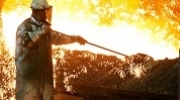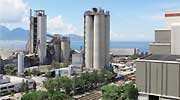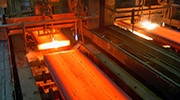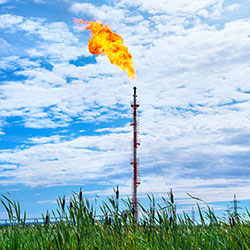ATex LoRa temperature sensors: two French industrial companies combine their know-how
CA PYROCONTROLE and MIOS, two French industrial companies, have pooled their skills to bring connected objects as close as possible to a complex process on the pilot site of one the major French players in refining by integrating LoRa® temperature sensors on the flare stacks. A trial run which has proved conclusive!
- For effective preventive maintenance
- How Pyrocontrole developed a LoRa ATex sensor
- 150 billion connected objects by 2025
- LoRa ATex sensors, to give you a competitive advantage

For early detection of events on the flare stacks
Although the use of connected objects has become widespread in our day-to-day lives, they are much rarer in the world of advanced industry, where wire connections are still widely used. This means the introduction of connected objects is shaking up industrial processes. Because of the rapid evolution of the Internet and the development of IIoT (Industrial Internet of Things) platforms, it is crucial to make the right technological choices for effective predictive maintenance.
Thanks to each company's complete mastery of their expertise, it took CA PYROCONTROLE, a subsidiary of the Chauvin Arnoux Group, and MIOS, a subsidiary of the SNEF Group, less than six months to meet the highly specific requirement of the French refinery seeking to implement a
solution forearly detection of events on all the flare stacks on the refinery site. The goal was to detect any gas leaks released into the atmosphere when burning off natural gas resulting from oil refining via flare stacks. Indeed, this practice has a significant environmental impact due to the emission of carbon dioxide, the main greenhouse gas, as well as wasting a potential resource. To recycle this gas instead of burning it, MIOS has installed CA PYROCONTROLE, sensors for explosive atmospheres downstream of each valve to measure the external temperature. By comparing it with the temperature normally accepted in the flare stacks, these sensors detect any anomalies liable to lead to a gas leak. So measuring is important, but transmitting the measurement data from the CA PYROCONTROLE Atex temperature sensors to a single server is even more crucial to help you react quickly. Making sensors communicate while cutting system operating costs to a minimum has given rise to a totally innovative solution in industrial conditions. By integrating the LoRa® communication technology, MIOS has responded in full to the dual problem faced by the refiner.
LoRa® is gradually gaining a foothold in the world of cutting-edge industry
LoRa®is a telecommunication protocol for low-bandwidth radio communication by objects with low electricity consumption. LoRa® can be used to connect sensors or objects requiring a long battery life (several years) in a compact format (size of a matchbox or cigarette packet) at reduced cost. MIOS, specialized in the Internet of Things, therefore rose to the challenge of developing ATex temperature sensors using a reliable, long-term technology which is cheap to implement. 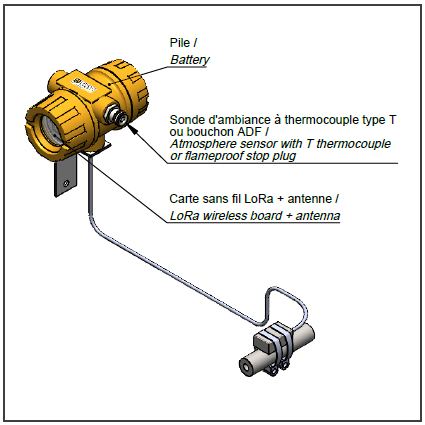 MIOS developed an electronic circuit board incorporated in each CA PYROCONTROLE ATex temperature sensor and rolled out the entire LoRa® radio communication infrastructure on the refinery site.. A sensor which has no contact with the process means less pipework, leading to considerable economic savings.
MIOS developed an electronic circuit board incorporated in each CA PYROCONTROLE ATex temperature sensor and rolled out the entire LoRa® radio communication infrastructure on the refinery site.. A sensor which has no contact with the process means less pipework, leading to considerable economic savings.
This technology, used until now in the tertiary sector, also offers a large number of advantages which can easily be transposed, whatever the industrial field involved.
Laying cables on an industrial site is extremely costly. The routing, infrastructures, operating licences and systems implemented all add to the bill. The LoRa® systems developed are lightweight, because they are wireless, and economical because they require little investment for installation or operation. Thanks to their range of several kilometres, the number of antennae is limited and each antenna is capable of managing up to 1,000 measuring devices. They require little maintenance and their batteries have a life span of around ten years. That means significant savings in terms of time and money to minimize the costs.
The IoT, a strategic target for French industrial companies
The Internet of Things or IoT refers to the growing number of objects connected to internet, thus allowing communication between our physical possessions and their digital representatives. Considered to be the third internet revolution, described as Web 4.0, it will see more than one hundred and fifty billion objects connected together by 2025.
The IoT is included in the digital roadmap which the CHAUVIN ARNOUX Group and the SNEF Group , have been following for a few years now..
Through its subsidiary MIOS, the SNEF Group is a recognized player in the connected world and proposes innovative data transmission and industrial IT solutions. 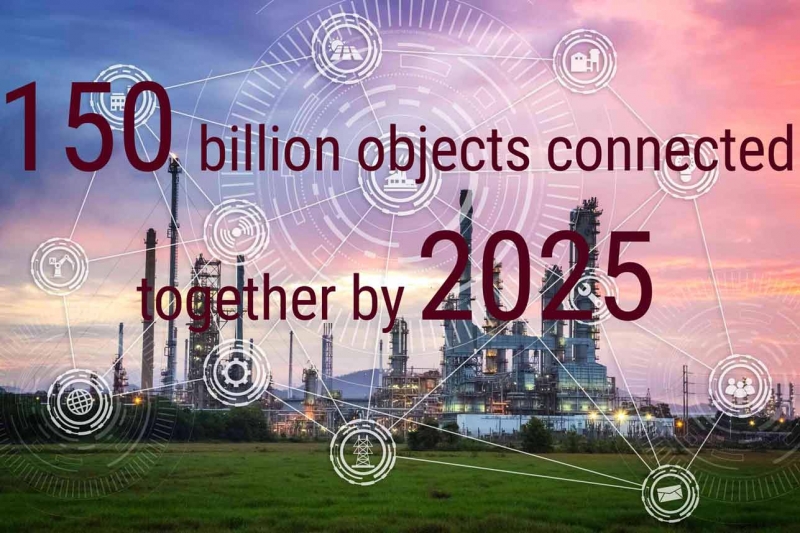 As an expert in temperature measurement in severe environments, CA PYROCONTROLE is exploring the possibilities offered by the IoT to develop unprecedented services based around data analysis for its customers. In any case, these industrial companies were not mistaken and have understood the potential of the IoT for them. They are now determined to take advantage of their know-how.
As an expert in temperature measurement in severe environments, CA PYROCONTROLE is exploring the possibilities offered by the IoT to develop unprecedented services based around data analysis for its customers. In any case, these industrial companies were not mistaken and have understood the potential of the IoT for them. They are now determined to take advantage of their know-how.
New development prospects in the IoT
According to the study : "IoT: the reality for the industrial sector in France?" (PAC, avril 2017, in French), 72% of European industrial companies expect to step up their investment in the Internet of Things (IoT) in the next 3 years. This also means new prospects for the development of innovative products and services for French companies seeking to contribute to the transformation of industrial processes (production, quality control, etc.).
Preventive maintenance is naturally the top priority of industrial managers, who see IoT solutions as a fundamental pillar of their future growth and the cost reductions linked to them.
This growing maturity regarding the Internet of Things places temperature sensors at the centre of infinite possibilities and makes the associated LoRa® communication technology,a genuine source of value creation and competitive advantage. By highlighting the case of the refinery, MIOS and CA PYROCONTROLE are opening up the possibility of rolling out similar solutions for industrial companies currently engaged in an identical approach to cut operating costs.
A solution with multiple advantages
- Time saved through lightweight implementation; minimization of installation costs
- Technology with low electricity consumption
- Long battery life in a compact format
- Economical wireless solution; little investment for operation
- Effective predictive maintenance; reliable, long-term communication which is cheap to set up
- Easy to transpose to all industrial sectors
















